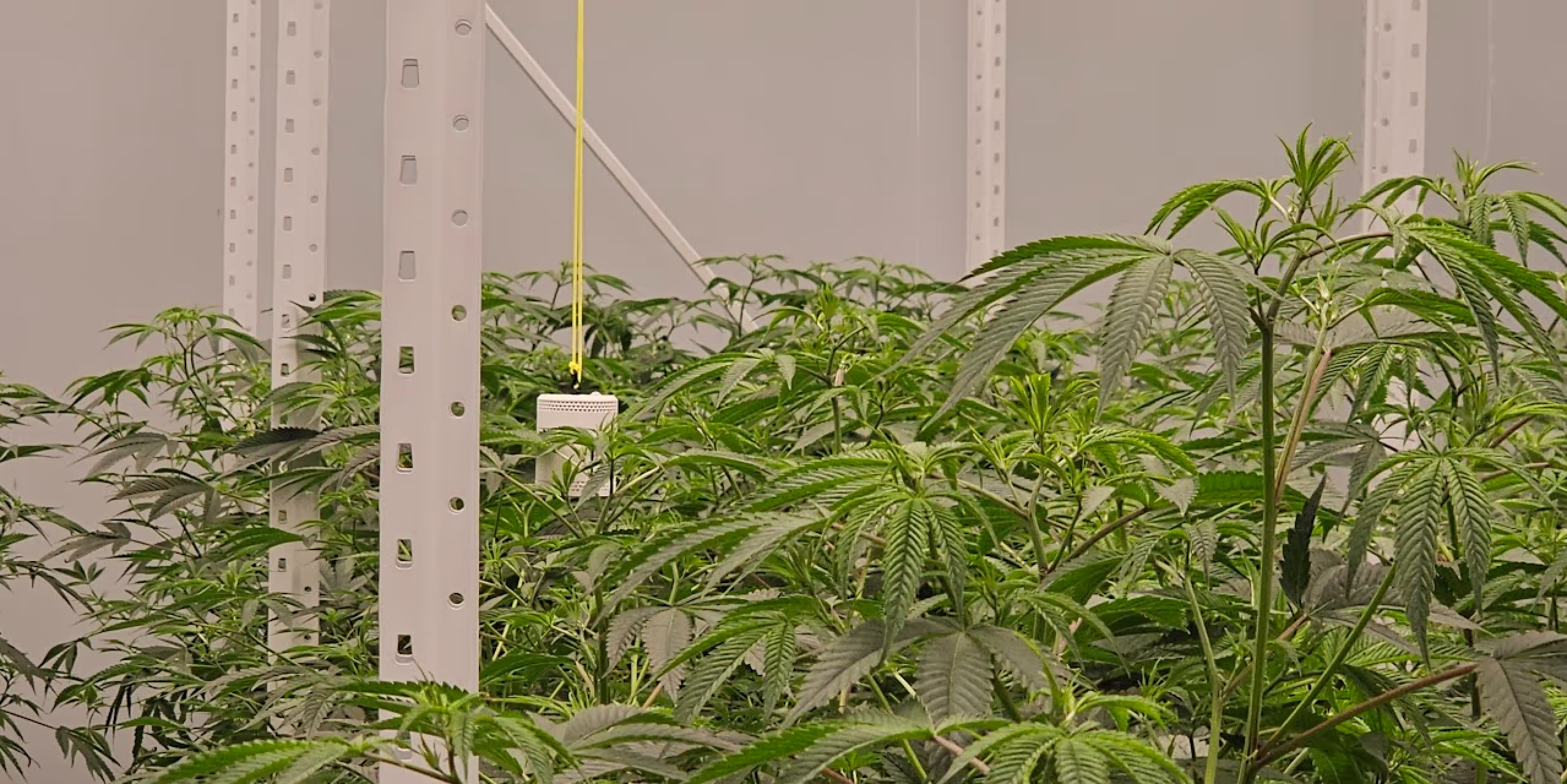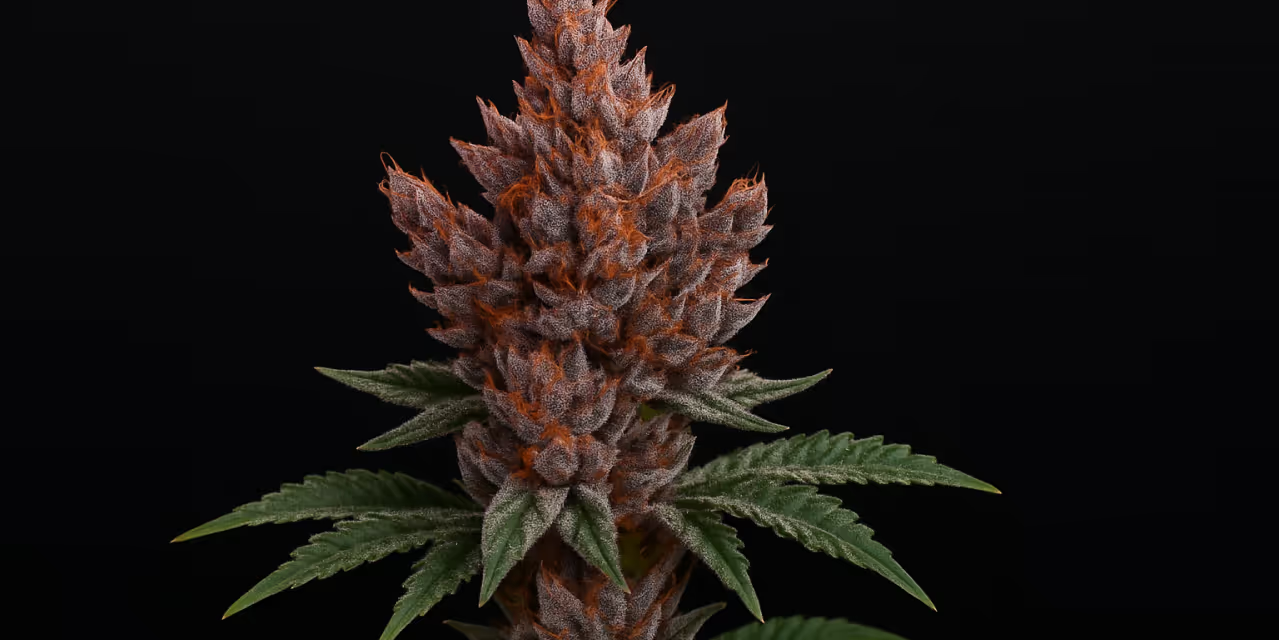Thrips damage: how to win the fight for your cannabis


Thrips, ah. the little insects that can pose annoying issues for cannabis cultivation.
Thrips are minuscule, elongated insects that feed on cannabis plants’ sap, resulting in discolouration, crooked development, and decreased yields.
But chill, fellow growers! It is possible to effectively prevent and treat thrips damage with the correct information and methods. The impact of thrips on cannabis plants will be discussed in this article, along with several strategies for avoiding and treating thrips damage. Have a cup of coffee, relax, and let’s get to work!
Disclaimer: Any information given on this site is for educational purposes only. Please ensure if you’re growing cannabis you’re doing so in accordance with the law and subject to appropriate permissions and licences of the applicable country.
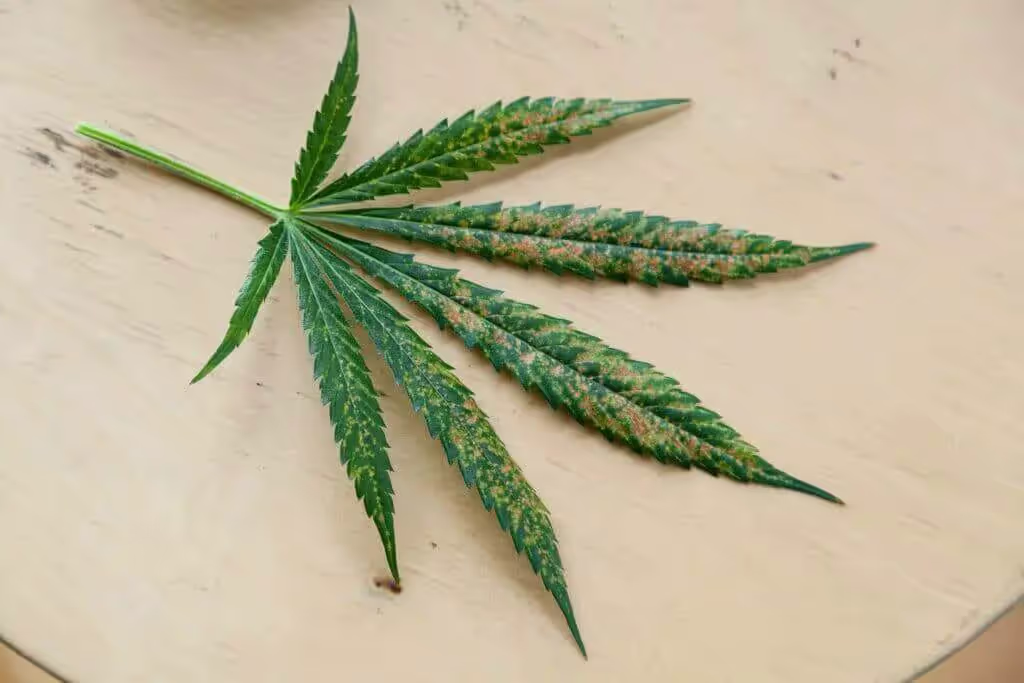
Identifying thrips on buds and leaves
In cannabis plants, thrips damage is visible and easy to identify. Thrips cause discolouration, silver or white streaks, and deformed growth by feeding on the sap of leaves and buds. The undersides of leaves, where thrips feed and lay their eggs, show the most damage. Moreover, this is where other pests like mealybugs can be found. The thrips leaf damage may also present as twisted or irregularly formed leaves.
The thrips life cycle
Thrips hatch from long, cylindrical eggs that are laid on the surface of the leaves and buds of your plant. They go through four phases of development between being thrip eggs and becoming adult thrips.
Thrips look like tiny, pale, worm-like animals before developing into larger, dark critters as they get older.
Thrips can develop multiple generations of themselves on your plants at once since they reproduce quickly and can complete their full life cycle in as little as two weeks.
Infestations of thrips are caused by various factors.
Thrips infestations on cannabis plants can be caused by an array of reasons. They consist of:
Overcrowding: Thrips can spread more easily from one plant to another when there are more people around the plants.
Inadequate ventilation: can cause excessive levels of humidity, which might draw thrips to cannabis plants.
High temperatures: Thrips thrive in warm settings and can procreate quite quickly.
Other pests: Thrips are frequently drawn to plants that are already afflicted with other pests, such as aphids or spider mites (LINK) (LINK).
Unhealthy plants: Plants that are stressed or weakened owing to illness or nutrient deficits are more susceptible to be infested by thrips.
You can take precautions to lower the danger of thrips damage on your cannabis plants by being aware of the elements that contribute to Thrips infestations.
Use a smart-grow sensor, such as Grow Sensor, to stay on top of some of the elements that can result in a thrips infestation. This clever piece of equipment will precisely track your growing area and give you extensive real-time information about the environmental conditions your plants are encountering.
The severity of a thrips infestation
Thrips are regrettably just one of the several pest species that we may come across as growers.
Each pest has the potential to harm your plants, so you shouldn’t ever leave them untreated when they are found. The good news is that thrips rank relatively low for pest damage.
Although a thrips infestation is unlikely to result in your plant’s death, there would undoubtedly be thrip damage on leaves. This might occasionally reduce the yield of any impacted plants, which is something we absolutely want to prevent!
White aphids, spider mites, and russet mites are three pests to keep a lookout for because they may all cause far more damage than thrips.
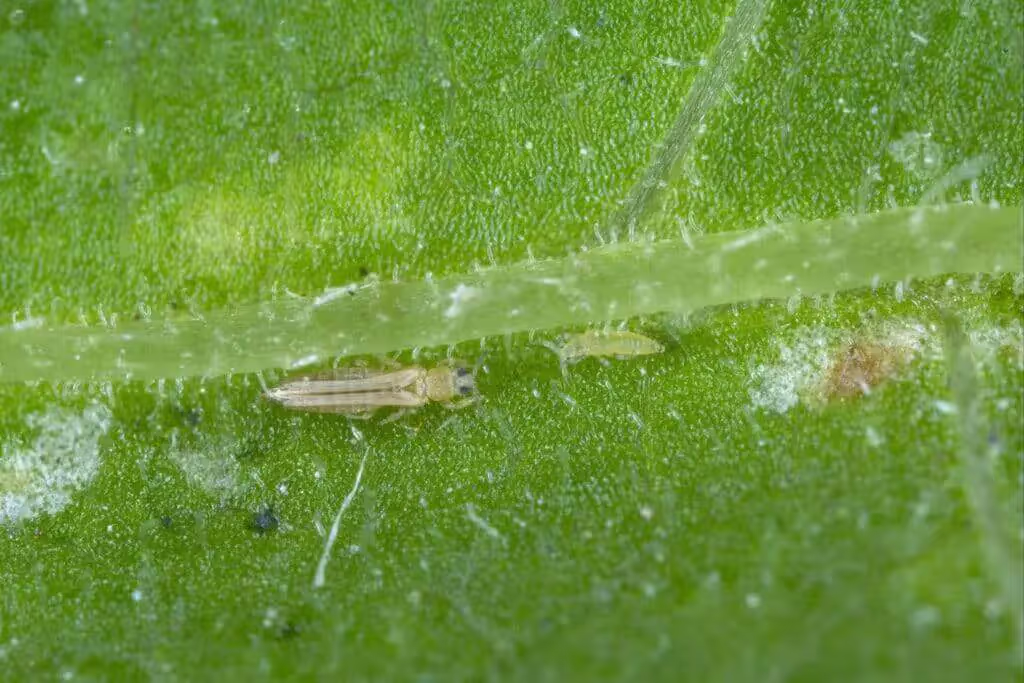
Preventing thrips damage
Using good cultivation practices can lower the likelihood of thrips infestations.
The likelihood of thrips infestations on cannabis plants can be significantly decreased by using good growing techniques. These techniques consist of:
Correct spacing: is essential to allowing air to easily circulate around cannabis plants as they grow.
Adequate ventilation: helps maintain a healthy environment and lowers the possibility of thrips infestations.
Healthy plants: Ensure that cannabis plants get the nutrients and water they require to grow robust and healthily.
Maintaining cleanliness is important because thrips may hide in grow rooms and other growth spaces and quickly infest cannabis plants. Make sure any infested plants are properly quarantined to avoid the infestation spreading.
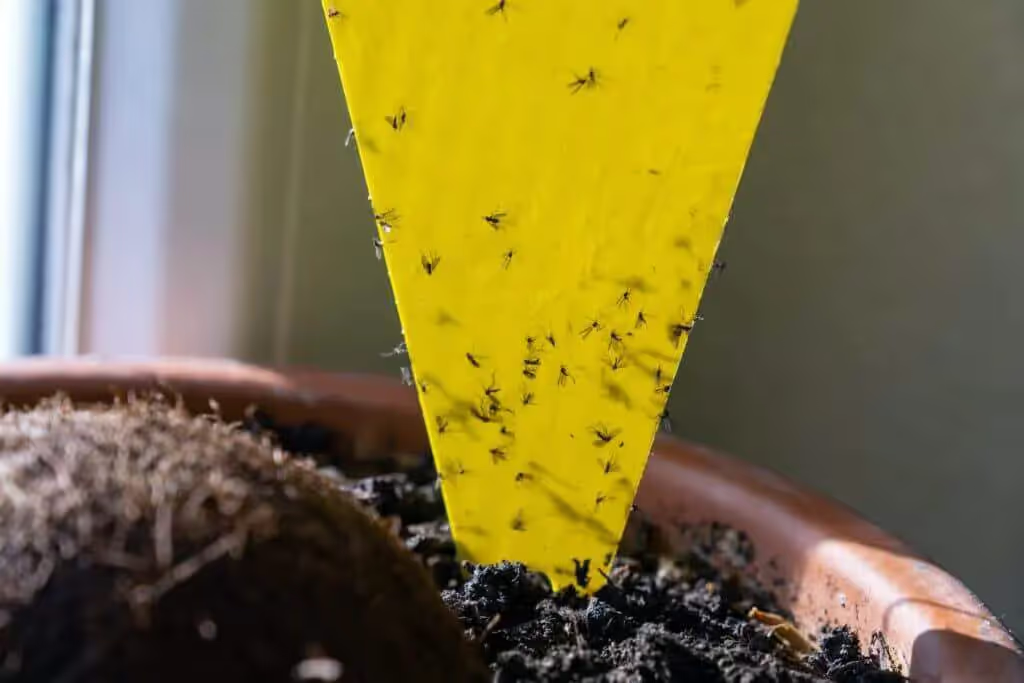
Using physical barriers like sticky traps or screens
Thrips infestations can be prevented by using physical barriers like screens or sticky traps. Sticky traps can be used to catch thrips and lower their population, while screens can be installed around cannabis plants to keep them out.
Selecting cannabis varieties that are resistant
Selecting cannabis cultivars that are resistant to thrips is another approach to prevent the damage from occurring. Thrips and other pests are naturally resistant to some cannabis strains, which can lessen the likelihood of infestations and harm. Consult your local store or seed supplier for advice on thrips-resistant varieties.
By implementing these prevention strategies, you may lower the danger of thrips damage to your cannabis plants meaning that you can also enjoy a healthy, abundant crop.
Get the latest grow tips – subscribe to the Grow The Best newsletter now!

How to get rid of thrips?
Chemical thrips infestation treatments
Chemical treatments can be highly successful in addressing thrips damage.
Chemical insecticides like neonicotinoids and pyrethroids can be used to control thrips infestations.
Following the instructions on the label and taking precautions are essential steps to take to prevent exposing yourself or your plants to dangerous substances. And always put your safety first!
If you didn’t read the label, you don’t want to be the one who damaged their cannabis harvest.
Thrips infestation remedies using natural methods
There are also organic treatments for thrips infestations available to those who like a more natural approach.
Neem oil, beneficial insects like ladybirds, and predatory mites that devour insects like thrips and other pests can all be excellent natural pesticides.

When to treat thrips damage and advice for doing so successfully
As soon as thrips damage symptoms are discovered, they should be treated.
Early treatment can lessen the harm to your cannabis plants and stop the infestation from spreading.
For optimal results, strictly follow the label’s instructions, use the treatments often, and take precautions to prevent further infestations.
Lastly, thrips damage to cannabis plants can be a real bummer, but with the appropriate information and techniques, it can be effectively avoided and handled.
The most important thing to remember is to work fast and with caution to create a strong cannabis output, whether you prefer chemical or natural treatments.
How long will the thrips treatment take?
The time it takes for thrips treatments to be effective on cannabis plants can differ depending on a number of variables, including their intensity, their treatment method, and where in the thrips’ life cycle they are. While organic treatments may take longer to produce noticeable benefits, some chemical treatments might produce immediate results within a few hours to a few days.
As a grower, you should keep a close eye on your plants to ensure the treatment is working because it may take several treatments to completely eradicate thrips from cannabis plants.
Conclusion
In this post, we’ve examined the harm that thrips cause to cannabis plants in more detail. We explored what thrips damage looks like as well as prevention and treatment options.
Keep an eye out for signs of thrips on plants whether you’re a seasoned grower or still developing your green thumb to ensure robust and fruitful cannabis production.
Final thoughts and advice for marijuana cultivators
Take notice of thrips damage: Check your cannabis plants frequently for damage caused by thrips, and take prompt action if you find any infestations.
The key is prevention: Thrips damage can be prevented by adopting effective cultivation techniques, physical barriers, and resistant strains.
Early and efficient treatment: If thrips do arise, treat the infestation as soon as possible using the recommended method according to the label for the best outcomes.
Don’t let the harm caused by thrips demotivate you—growing cannabis can be a rewarding and interesting experience!
Continue to be upbeat, laser-focused, and growth-oriented in your thrip control.
Happy growing!
Master your gardening – sign up for the Grow The Best newsletter!









.avif)


